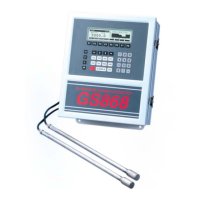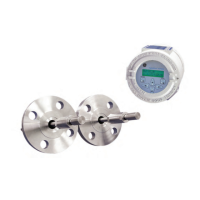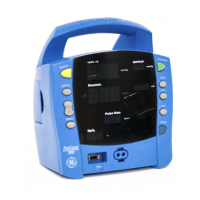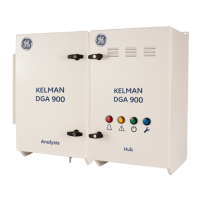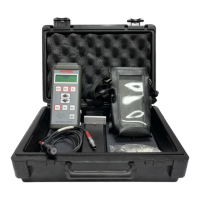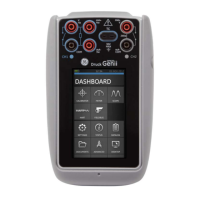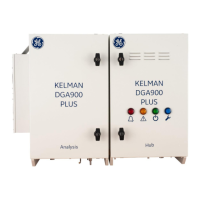Chapter 3. Diagnostics
26 DigitalFlow™ GF868 Service Manual (1 and 2-Channel)
3.4.1 Gas Problems
Most gas-related problems result from a failure to observe the flowmeter system installation instructions, as described
in the Startup Guide. Refer to Chapter 1, Installation, of the Startup Guide to correct any installation problems.
If the physical installation of the system meets the recommended specifications, it is possible that the gas itself may be
preventing accurate flow rate measurements. The gas being measured must meet the following requirements:
1. The gas must be homogeneous, single-phase and relatively clean. Although a low level of entrained particles may
have little effect on the operation of the Model GF868, excessive amounts of solid or liquid particles will absorb or
disperse the ultrasound signals. This interference with the ultrasound transmissions through the gas will cause
inaccurate flow rate measurements. In addition, temperature gradients in the gas flow may result in erratic or
inaccurate flow rate readings.
2. The gas must not excessively attenuate ultrasound signals.
Some gases (i.e., high-purity carbon dioxide, hydrogen, etc.) readily attenuate ultrasound energy. In such a case, an
E1 error code message will appear on the display screen to indicate that the ultrasonic signal strength is insufficient
for reliable measurements.
3. The gas sound speed may vary.
The Model GF868 will tolerate relatively large changes in the gas sound speed, as may be caused by variations in
gas composition and/or temperature.
3.4.2 Pipe Problems
Pipe-related problems may result either from a failure to observe the installation instructions, as described in the
Startup Guide, or from improper programming of the meter. By far, the most common pipe problems are the following:
1. The collection of material at the transducer location(s).
Accumulated debris at the transducer location(s) will interfere with transmission of the ultrasound signals. As a
result, accurate flow rate measurements are not possible. Realignment of the flowcell or transducers often cures
such problems, and in some cases, transducers that protrude into the flow stream may be used. Refer to Chapter 1,
Installation, of the Startup Guide for more details on proper installation practices.
2. Inaccurate pipe measurements.
The accuracy of the flow rate measurements is no better than the accuracy of the programmed pipe dimensions. For
a flowcell supplied by GE, the correct data will be included in the documentation. For other flowcells, measure the
pipe wall thickness and diameter with the same accuracy desired in the flow rate readings. Also, check the pipe for
dents, eccentricity, weld deformity, straightness and other factors that may cause inaccurate readings. Refer to
Chapter 2, Initial Setup, of the Startup Guide for instructions on programming the pipe data.
In addition to the actual pipe dimensions, the path length (P) and the axial dimension (L), based on the actual
transducer mounting locations, must be accurately programmed into the flowmeter. For a GE flowcell, this data
will be included with the documentation for the system. If the transducers are mounted onto an existing pipe, these
dimensions must be precisely measured. See Appendix D, Measuring P and L Dimensions, of the Startup Guide for
a thorough discussion of this topic.
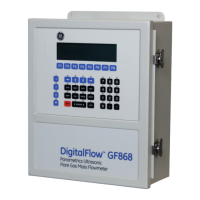
